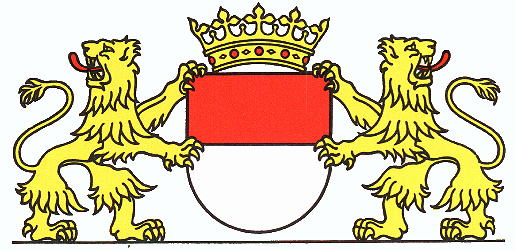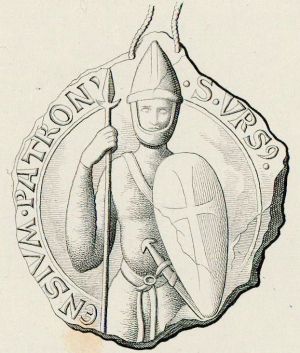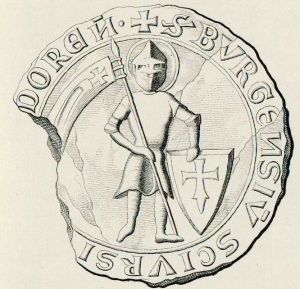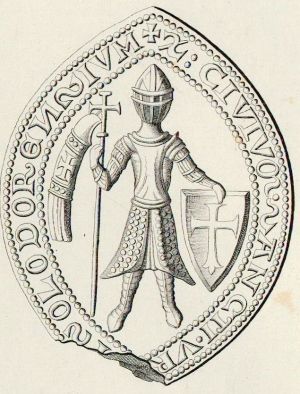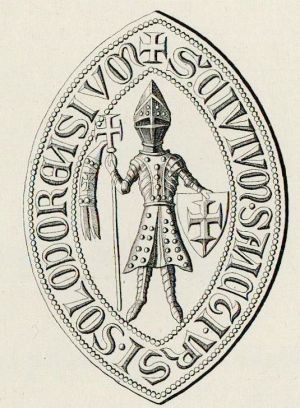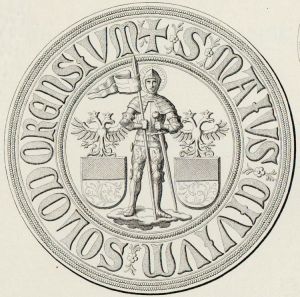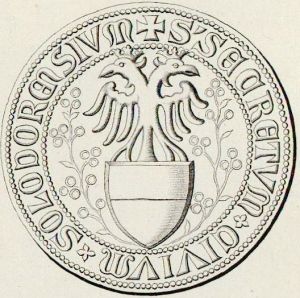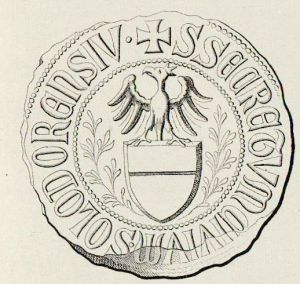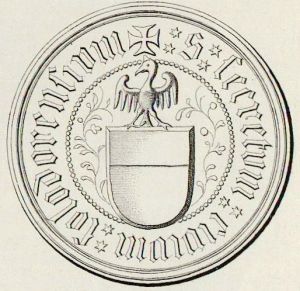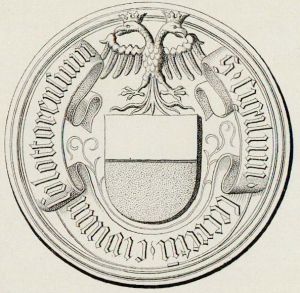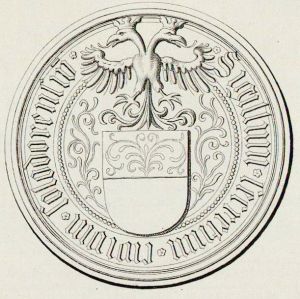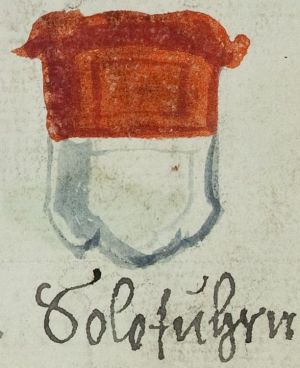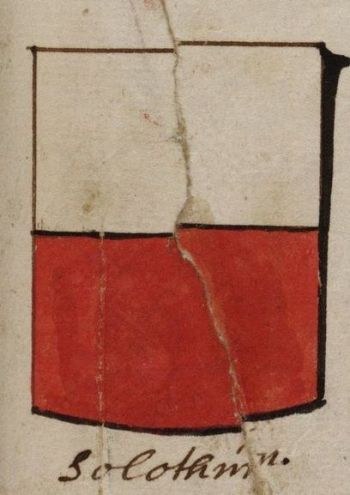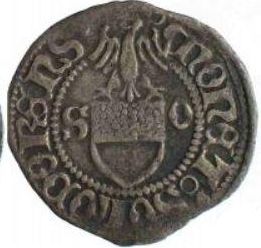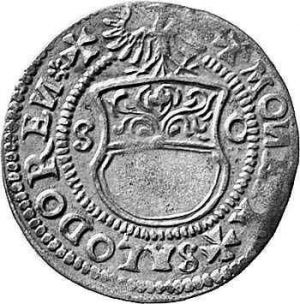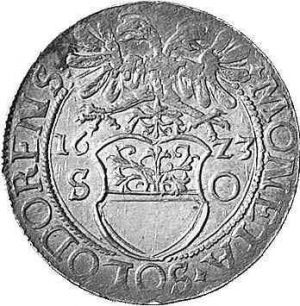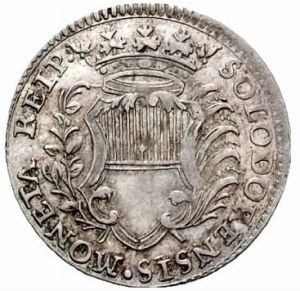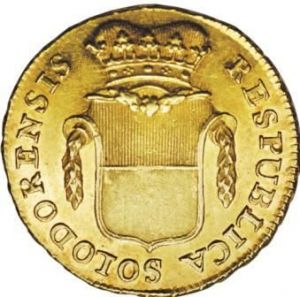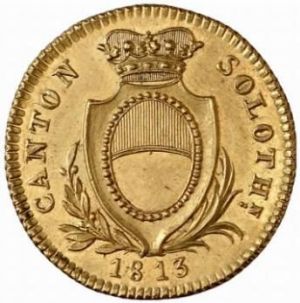Solothurn (canton)
SOLOTHURN
Official blazon
Origin/meaning
The arms of Solothurn are derived from and identical to the arms of the city of Solothurn. The only difference is the use of the supporters by the Canton.
The arms are derived from the old banner of the city, and is used on seals since 1394. The colours are known since 1443. The shield itself thus has not changed since.
A large number of seals are known for the city. The oldest seals of the city showed the local patron saint, St. Ursus. He initially holds a shield with a cross, but from the 15th century onwards he is gradually replaced by the arms of the city. Several seals were used at the same time period.
| The seal from 1230 |
The seal from 1251 |
| The seal from 1262 |
The seal from 1318 |
| The seal from the early 15th century |
The seal from 1394 |
| The seal from the 15th century |
The seal from the late 15th century |
| The seal from 1462 |
The seal from 1473 |
| The arms in a 16th century manuscript |
The arms in the Wapen- en Vlaggenboek van Gerrit Hesman (1708) |
Until the early 18th century the arms were often shown besides the Imperial eagle, as the area was part of the Holy Roman Empire. In the late 18th century the power of the empire became less and less and the eagle was replaced by the ducal crown. The lions were added around the same time.
Coins of the city and canton:
| The arms on a 15th century coin |
The arms on a 1549 coin |
| The arms on a 1623 coin |
The arms on a 1760 coin |
| The arms on a 1797 coin |
The arms on a 1813 coin |
Literature : Mühlmann, L. : Wappen und Fahnen der Schweiz, Bühler Verlag, Lengnau, 1977 and 1997.
